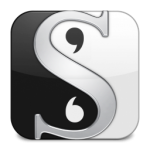It was breathtaking and I couldn’t stop reading it!
That’s the experience every reader wants and those are the words every writer wishes to hear. The adage that if your character is sleeping, so is your reader is all too true. So if your novel is stuck in the big swampy middle, so will your reader be and he may not have the fortitude to move on. So, how does one gracefully dance across the swamp without getting stuck? There are many books written on the topic but here are three things I’ve learned:
1) you have permission to make things difficult for your protagonist.
When a fellow writer made me aware that it was my duty to make things difficult for my protagonist – that I was supposed to be mean – writing got a whole lot easier and the middle became so much more fun! Disasters, unexpected problems, the fatal character flaw, the goal he so desperately wants is within reach yet is maddeningly elusive, twists and turns, the mentor dies, red herrings … the list of trouble goes on.
Through the middle, there will be many mini-problems which escalate into bigger ones and culminate into the BIG middle disaster. The BIG middle disaster is the lynch pin of a problem that propels the protagonist into the third act where he rises to the challenge in the smashing climax. This disaster can happen anywhere from the mid-point to the end of the middle.
Most importantly, the protagonist complicates the situation, makes it more complex, worsens it and raises the stakes. How can your protagonist worsen the situation? By having a fatal flaw that he must overcome in order to achieve his goal such as shyness, insecurity, impulsiveness, greed, play-by-the-rules, or risk taker. Sometimes the character may experience success but that can have unintended consequences such as: the antagonist’s reaction; there’s a worse problem he wasn’t aware of; or a secondary character has a bad reaction to the achievement.
2) plan your BIG middle disaster and work toward it
The plan doesn’t have to be overly detailed. Even if you’re a pantster, it helps to know where the BIG middle disaster will occur and what it will be. This will keep you from being derailed, from writing scenes that don’t support the story goals and the final conflict. There’s still lots of room for pantster creativity in getting to the BIG middle disaster and moving beyond to the climax.
As you’re working toward the BIG middle disaster, as you’re ramping up the tension by increasing emotional, physical  and psychological conflict, as your characters reactions and actions are met with resounding consequences and reactions, keep in mind the story telling technique you’re using. For example, is this primarily an action oriented, plot driven story? Are you using a mini-arc, a smaller story within a larger one which although connected, serves to reveal information about the characters? Are you following a sub-plot? Is there a new character to add an unexpected dimension to the tale? It’s too easy to get derailed and fall into the swamp if you’re not clear about which technique you’re using.
and psychological conflict, as your characters reactions and actions are met with resounding consequences and reactions, keep in mind the story telling technique you’re using. For example, is this primarily an action oriented, plot driven story? Are you using a mini-arc, a smaller story within a larger one which although connected, serves to reveal information about the characters? Are you following a sub-plot? Is there a new character to add an unexpected dimension to the tale? It’s too easy to get derailed and fall into the swamp if you’re not clear about which technique you’re using.
And it can never be overstated: increase conflict to increase tension to keep readers wanting to know what’ll happen next. For every event, there is a reaction with resounding consequences and more reactions and actions. This will make writing the story exciting for you and a white-knuckle read.
3) focus on the prize
You’ve got your beginning with the story problem clear in your mind. Your protagonist has faced an opening disaster that commits him to solving the problem. You know the prize, the novel’s ending. Now, you must focus on that prize with your protagonist to get him to the ending. At this point, it doesn’t matter if he succeeds and this is a happy ending, or if he fails and this is an unhappy ending or if this is a bittersweet ending with mixed results. What matters is keeping an eye on the goal, working toward the climax by making sure all events -setbacks, triumphs, actions and reactions – somehow contribute to the end result.
Subplots, side trips that reveal character only count if that incident or revelation shows us something significant about the character in relation to the story goal. Saving a cat may be important if it shows a compassionate, compulsive need to act which gets him into trouble later on. For example, it’s a laudable trait to get the cat out of the tree because grandma’s upset and her blood pressure is rising. But, when escaping from the bad guys, he stops running across rooftops because he sees a half starved cat that’s too scared to jump and the six year old kid is on the ground crying. You can imagine how his compassion may get him into more trouble. The rule is that everything you reveal or use must contribute to your character working toward the prize.
The middle is really the fun part of writing the novel. It’s where you can explore your character, exploit his weaknesses and strengths, and keep ramping up the excitement. There are times when I stop writing and ask my character: What do you see? or Oh, oh, what are you going to do now? Your character will answer those questions for you and stay true to the story goal if you’ve done your homework in your character profile, and if you keep your focus on the prize.
For me, the middle is an incredible adventure where the protagonist and I journey through murder, mayhem and have the time of our lives!
What works for you?








